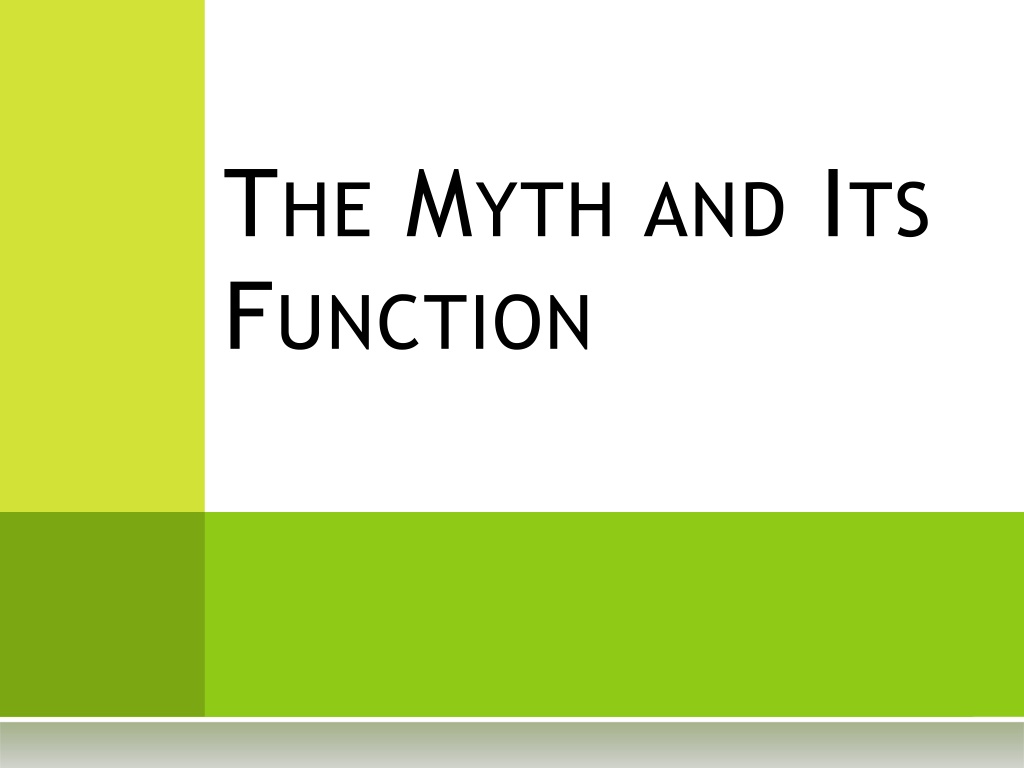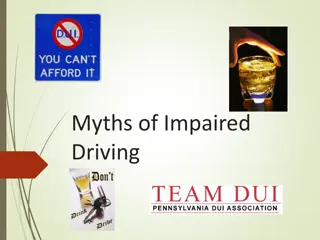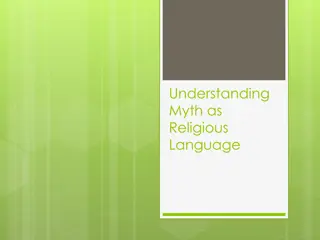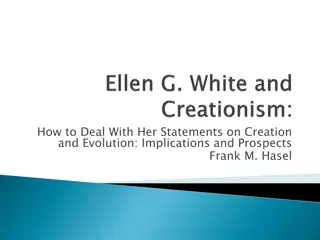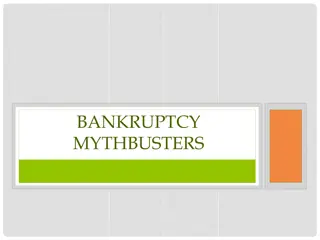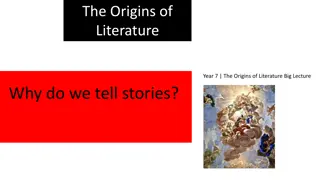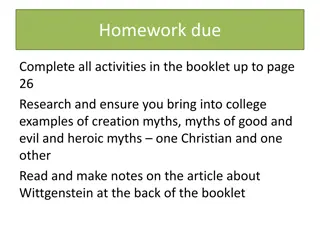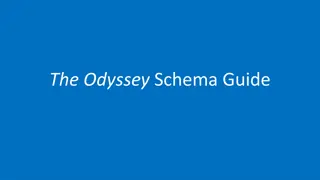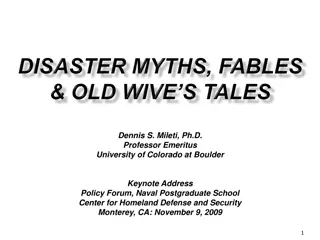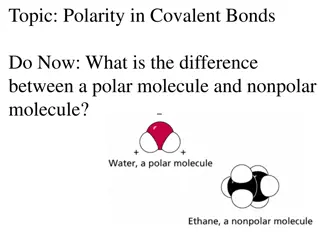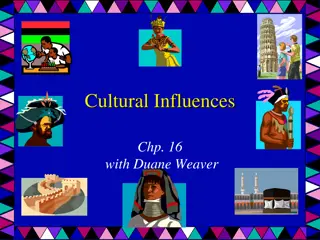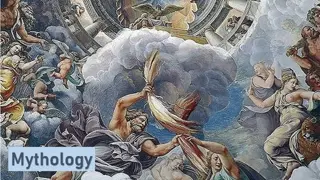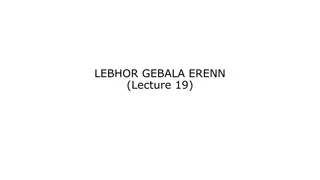Understanding Myths: Creation, Function, and Difference
Explore the intriguing world of myths and legends, uncovering the origins of these ancient stories, their purpose in society, and the distinctions between myths, legends, and folktales. Discover the essence of myths as they offer explanations for the unknown, answer fundamental questions, and form part of diverse mythologies across cultures.
Download Presentation

Please find below an Image/Link to download the presentation.
The content on the website is provided AS IS for your information and personal use only. It may not be sold, licensed, or shared on other websites without obtaining consent from the author. Download presentation by click this link. If you encounter any issues during the download, it is possible that the publisher has removed the file from their server.
E N D
Presentation Transcript
THE MYTH AND ITS FUNCTION
WHAT IS INCLUDED What is a Myth? The Sacred Myth Establishing Order The Ideal Entertaining the Masses
HOW WERE THESE STORIES CREATED?
MYTH Def. a fictitious story or half-truth Many culture have their own myths. These stories may be widely different, but the characteristics are similar
WHAT MAKES A MYTH? No single author Story evolves through the telling and retelling of it by many people
A MYTH IS Essential Elements of a Myth A religious story; Offers explanation for the unknown; Attempts to answer broad and fundamental questions; and Part of a larger mythology
LEGENDS & FOLKTALES Myth, legend & folktale used interchangeably because they share similar similarities BUT Myths must have ALL of the Essential Elements. If not, then it is a legend or a folktale.
LEGENDS DEF. a story handed down through generations with no hard evidence backing it up All myths are legends, but not all legends are myths.
FOLKTALES DEF. a story that is pure fiction and are not founded on a particular person, place or event. All myths are folktales, but not all folktales are myths.
PROTECT YOURSELF PRAY! Greeks and Romans were very religious people. Myths defined who people should turn to in times of need.
READ YOUR RITES Myths give religious rights meaning or sometimes even spawned new rites. Most common rite explored = ritual of sacrifice (Prometheus)
NATURAL & SOCIAL ORDER Another important role of the myth is that of creating both natural and social order. Creation begins with Chaos Myth works to give specific order to the universe Order created in cosmos Myth brings order to lesser beings (humankind & society)
NATURAL ORDER Most myths confirm that Zeus, ruler of gods, was responsible for creating order in the natural world. Zeus presided over the affairs of the natural world Placed the starts & planets in their places Gave rain, snow, thunder & lightening
SOCIAL ORDER Now that they universe has been created and under control, the lesser beings needed to understand their roles and rules (so they didn t upset the natural order) Ancients had their own set of rules Established through myths Zeus established these, too
Myths served to paint the portrait of the ideal human behavior and human being
Ancients enjoyed entertainment just like we do today only they used the oral tradition
ORAL TRADITION Told to people by bards (storytellers well-versed in heroic tales) Because they were under pressure to please audience s wishes, the same story would vary a bit from myth to myth or each time it was told
AND FINALLY Mythology is a source of great entertainment and academic study Don t accept myths as literal truths (we don t study them to gather answers) Even so, that doesn t mean we can t find our own truths within the mythological tales.
